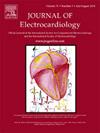生成式人工智能在心脏电生理医学教育中的应用综述
IF 1.2
4区 医学
Q3 CARDIAC & CARDIOVASCULAR SYSTEMS
引用次数: 0
摘要
生成式人工智能(AI)是人工智能的一个组成部分,它以文本、图像和音频的形式创建合成的多模态输出。体表心电判读教学采用了多种方法。然而,学习者的表现仍然很差。生成对抗网络(GANs)形式的生成式人工智能是一种新型的人工智能模型,它有可能通过创建合成心电图和传导缺陷的解剖描述来增强受训者ECG的解释。生成式人工智能可以在医学教育中实施,以定制受训者的体表心电图解释,以提高学习和记忆。本文章由计算机程序翻译,如有差异,请以英文原文为准。
A practical review of generative AI in cardiac electrophysiology medical education
Generative artificial intelligence (AI) is a component of artificial intelligence that creates synthetic multi-modal output in the form of text, images, and audio. Multiple approaches have been implemented into teaching surface ECG interpretation. However, learner performance remains poor. Generative AI in the form of Generative Adversarial Networks (GANs) is a novel AI model that has the potential to augment trainee ECG interpretation via creation of synthetic ECGs and anatomical depiction of conduction defects. Generative AI may be implemented in medical education to customize trainee surface ECG interpretation to improve learning and retention.
求助全文
通过发布文献求助,成功后即可免费获取论文全文。
去求助
来源期刊

Journal of electrocardiology
医学-心血管系统
CiteScore
2.70
自引率
7.70%
发文量
152
审稿时长
38 days
期刊介绍:
The Journal of Electrocardiology is devoted exclusively to clinical and experimental studies of the electrical activities of the heart. It seeks to contribute significantly to the accuracy of diagnosis and prognosis and the effective treatment, prevention, or delay of heart disease. Editorial contents include electrocardiography, vectorcardiography, arrhythmias, membrane action potential, cardiac pacing, monitoring defibrillation, instrumentation, drug effects, and computer applications.
 求助内容:
求助内容: 应助结果提醒方式:
应助结果提醒方式:


